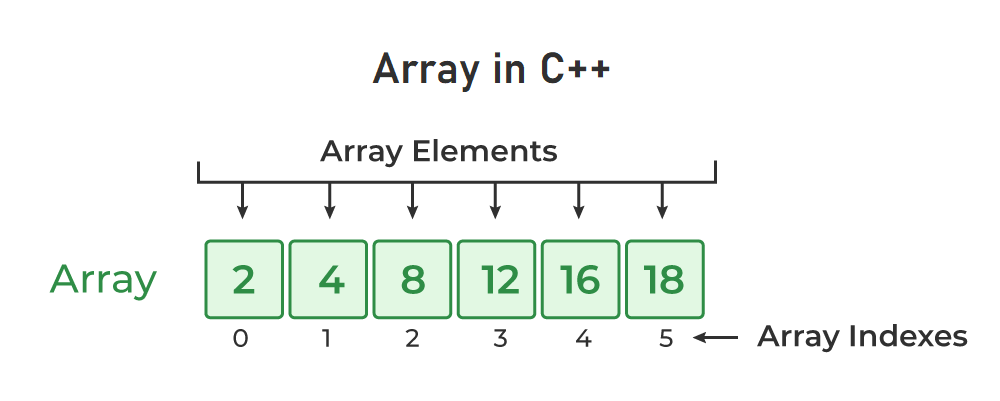Object Oriented Programming
The concepts of Object-Oriented Programming (OOP) in C++ and cover classes, objects, constructors, destructor, access modifiers, encapsulation, friend functions, and friend classes, along with examples for each.

IMAGE SOURCE :- TECHFLY.COM
C++ Classes and Objects
Classes: A class is a blueprint for creating objects. It defines a datatype by bundling data and methods that work on the data into a single unit.
Objects: Objects are instances of a class. When a class is defined, no memory is allocated until an object of that class is created.
Example:
using namespace std;class Car {
public:
string brand;
string model; int year;};int main() {
Car car1;
car1.brand = "Toyota"; car1.model = "Corolla"; car1.year = 2020; cout << car1.brand << " " << car1.model << " " << car1.year << endl; return 0;
}
C++ Constructors
Constructors: Constructors are special member functions of a class that initialize objects of that class. They have the same name as the class and do not have a return type.
Example:
using namespace std;class Car {public:
string brand; string model;
int year; // Constructor
Car(string b, string m, int y) { brand = b; model = m; year = y;
}
};int main() {
Car car1("Toyota", "Corolla", 2020); cout << car1.brand << " " << car1.model << " " << car1.year << endl; return 0;}
C++ Constructor Overloading
Constructor Overloading: Constructor overloading is a concept where you can have multiple constructors in the same class with different parameter lists.
Example:
using namespace std;class Car {public:
string brand; string model; int year; // Default constructor
Car() { brand = "Unknown"; model = "Unknown"; year = 0; }
// Parameterized constructor
Car(string b, string m, int y) { brand = b; model = m;
year = y;
}};
int main() { Car car1; Car car2("Toyota", "Corolla", 2020);
cout << car1.brand << " " << car1.model << " " << car1.year << endl; cout << car2.brand << " " << car2.model << " " << car2.year << endl;
return 0;}
C++ Destructors
Destructors: Destructors are special member functions that are executed when an object is destroyed. They have the same name as the class, preceded by a tilde (~), and they do not return any value.
Example:
using namespace std;class Car {public:
string brand; string model; int year; // Constructor
Car(string b, string m, int y) { brand = b; model = m; year = y;
cout << "Car object created." << endl; } // Destructor
~Car() {
cout << "Car object destroyed." << endl; }
};int main() { Car car1("Toyota", "Corolla", 2020); return 0;}
C++ Access Modifiers
Access Modifiers: Access modifiers define the accessibility of the members of a class. The three main access modifiers in C++ are public, private, and protected.
Example:
using namespace std;class Car {private: string brand; string model; int year;public: void setDetails(string b, string m, int y) { brand = b;
model = m; year = y; }
void getDetails() { cout << brand << " " << model << " " << year << endl; }};int main() {
Car car1;
car1.setDetails("Toyota", "Corolla", 2020); car1.getDetails();
return 0;}
C++ Encapsulation
Encapsulation: Encapsulation is the concept of wrapping data and methods that operate on the data within a single unit, typically a class. It restricts direct access to some of the object’s components.
Example:
using namespace std;class Car {private:
string brand; string model; int year;public:
void setBrand(string b) {
brand = b;
} string getBrand() { return brand;
}
void setModel(string m) {
model = m; }
string getModel() { return model; }
void setYear(int y) {
year = y; }
int getYear() {
return year; }
};int main() {
Car car1;
car1.setBrand("Toyota");
car1.setModel("Corolla");
car1.setYear(2020); cout << car1.getBrand() << " " << car1.getModel() << " " << car1.getYear() << endl; return 0;
}
C++ friend Function and friend Classes
friend Functions: A friend function is a function that is not a member of a class but has access to the class’s private and protected members.
Example:
using namespace std;class Car {private:
string brand; string model; int year;public:
Car(string b, string m, int y) : brand(b), model(m), year(y) {} // Declare friend function
friend void displayDetails(Car &c);};void displayDetails(Car &c) { cout << c.brand << " " << c.model << " " << c.year << endl;}
int main() {
Car car1("Toyota", "Corolla", 2020); displayDetails(car1); return 0;
}
friend Classes: A friend class can access the private and protected members of another class in which it is declared as a friend.
Example:
using namespace std;class Engine {private: int horsepower;public: Engine(int hp) : horsepower(hp) {}
friend class Car; // Declare Car as a friend class
};class Car {
private:
string brand; string model;
int year; Engine engine;
public:
Car(string b, string m, int y, int hp) : brand(b), model(m), year(y), engine(hp) {} void displayDetails() {
cout << brand << " " << model << " " << year << " " << engine.horsepower << " HP" << endl; }};int main() { Car car1("Toyota", "Corolla", 2020, 132); car1.displayDetails(); return 0;}


